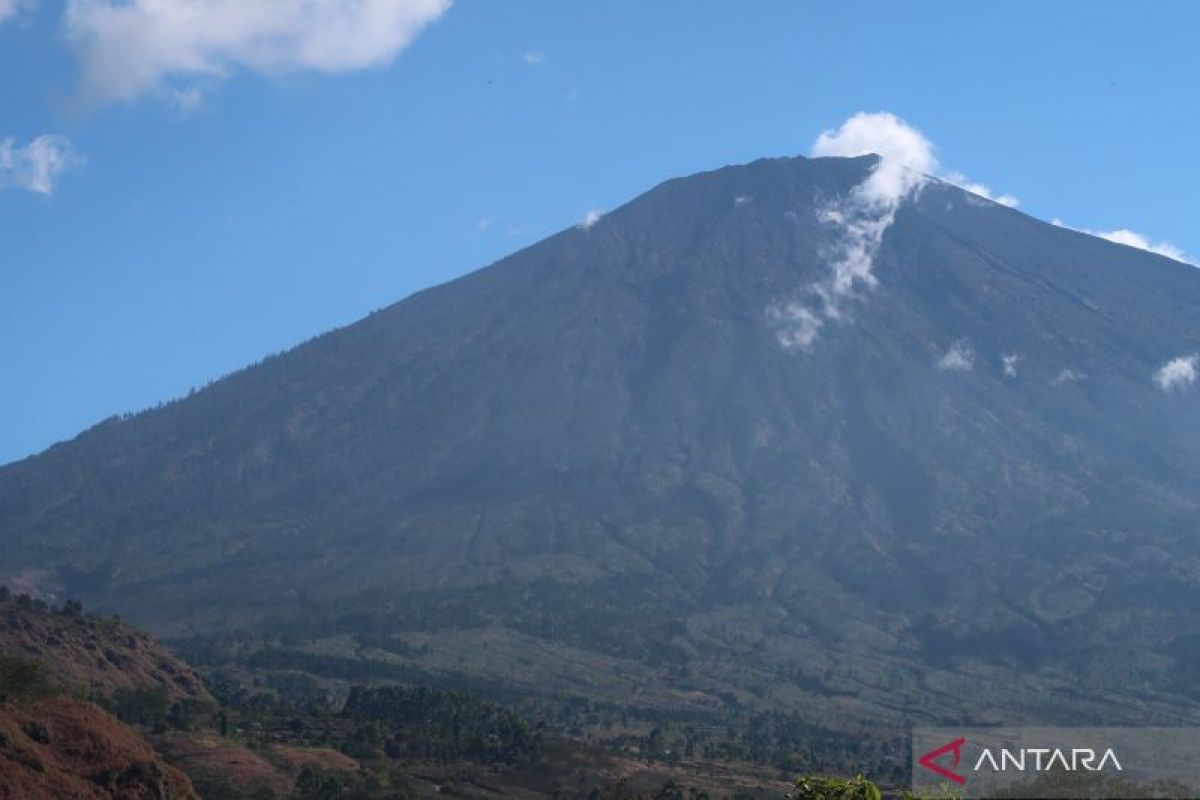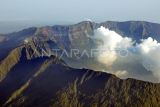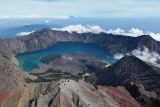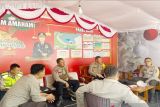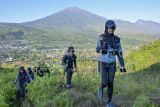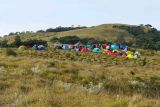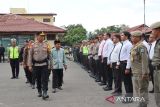East Lombok (ANTARA) - Mount Rinjani on Lombok Island, West Nusa Tenggara, is a magnet for nature tourism lovers with its savanna vegetation, tropical forests, lakes, and the aroma of sulfur lending it an air of undisturbed tranquility.But that image quickly fades once you spot the trail of garbage strewn along the hiking route and trash dotting the Mount Rinjani campsite.
Waste pollution has emerged as a serious problem at the mountain, which towers at an imposing 12,224 feet. According to the main manager of the UNESCO Rinjani Global Geopark Management Agency, Mohamad Farid Zaini, waste pollution has mounted over the past decade at the site.
The growing piles of plastic waste are not only spoiling the view, but also threatening the environment and health of the mountain: The garbage littering the Mount Rinjani National Park area can pollute the soil and water, and even kill any animals that ingest it.
As per the Mount Rinjani National Park Office's records, 140 thousand people climbed the mountain in 2023. The high number of tourist visits following the COVID-19 pandemic has had an impact on the volume of garbage in the area.
And, the rising number of tourist visits from year to year could potentially worsen the problem.
Therefore, it is vital to manage the waste without delay to prevent any further damage to the beauty of the third-highest mountain in Indonesia.
Multi-stakeholder collaboration
On September 3, 2024, representatives from various stakeholders, comprising the local government, climbing organizers, guides, as well as local communities, gathered for the Rinjani Zero Waste Trekking discussion at a hotel opposite the Sembalun village climbing resort in East Lombok Regency, West Nusa Tenggara.
Sitting in a row, they came up with a precise strategy to tackle the garbage polluting Mount Rinjani.
Head of the Mount Rinjani National Park Office, Yarman, said that six hiking trails — the Senaru and Torean trails in North Lombok Regency; the Sembalun, Timbahun, and Tete Batu trails in East Lombok Regency; and the Aik Berik trail in Central Lombok Regency — account for most of the waste.
Supervising Mount Rinjani, which has several hiking trails, is a major challenge given the limited number of officers. Plus, tourists making their descent often do not use the same trail they took to climb up the mountain.
The government cannot reduce the hiking trails to just one or two to support waste management -- a measure implemented at other mountains on Java Island -- given the impact it would have on the local economy.
In addition to the six hiking trails, there are 21 non-hiking tourist attractions that span four regencies on Lombok Island, namely North Lombok, East Lombok, Central Lombok, and West Lombok.
The largest number of non-hiking tourist attractions is located in the conservation area of East Lombok II, totaling 19 points.
In 2023, Mount Rinjani contributed Rp14.7 billion (around US$951.3 thousand) to non-tax state revenue with a turnover of Rp79 billion (US$5.1 million).
Given this relatively large economic value, waste management cannot be carried out by just one specific stakeholder, but requires collaboration among related stakeholders.
Waste-free climbing
The Rinjani Zero Waste Trekking activity resulted in a declaration to initiate a waste-free climb campaign at Mount Rinjani.
The declaration prescribes six waste management measures: intensive training, support for regulations, a waste-free climbing movement, a commitment to preventing waste generation, collaborating and active involvement, as well as the optimization of local potential to develop climbing logistics management.
The beauty of Mount Rinjani attracts climbers from all over the world. The Mount Rinjani National Park Office has limited the climber quota to just 400 people per day.
An electronic ticket system has now been implemented to enable the supervision of climbers' activities, both for safety and waste management. The busiest climbing activities occur from July to August.
Every year, from January to March, climbing activities are temporarily closed to restore the natural conditions and also clean up the waste polluting the mountain's environs.
The Mount Rinjani National Park Office emphasized that when climbing activities reopen in April 2025, climbers will no longer be allowed to carry plastic food and drink packaging up the mountain.
Food and drinks will need to be stored in reusable containers. If climbers forget to bring a reusable container, the office will provide one at the climbing resort and post II.
West Nusa Tenggara province's Environment and Forestry Service said that Mount Rinjani produces 11 tons of waste in a year.
Ten tons of the waste comes from climbing tourism, and the remaining one ton from non-climbing tourism.
Baca juga: Cable car in Mount Rinjani to boost regional tourism: Governor
Baca juga: NTB natives reject cable car to protect, preserve Mt Rinjani
Therefore, plastic food and beverage packaging must be handled at the entrance. Climbers must be encouraged to bring food and drinks in reusable containers to prevent plastic waste from accumulating along the climbing trails and camping sites.
Every climb organizer, guide, and porter must also ensure that no plastic waste is left behind after a climbing or camping activity on the mountain, which was designated a global geopark by UNESCO in 2018.
It is important to build awareness about handling waste independently because careless waste disposal would negatively impact the environment and mar the beauty of Mount Rinjani National Park.

